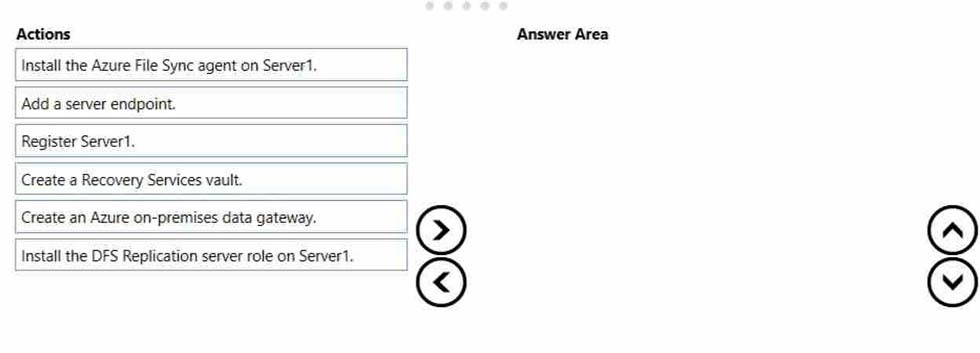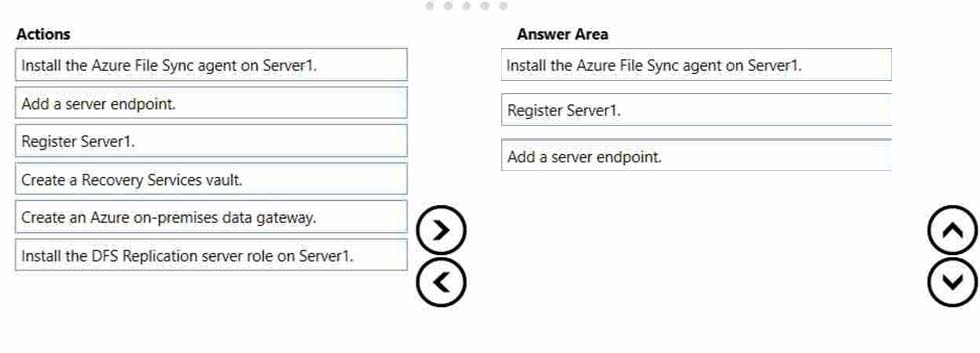

DRAG DROP -
You have an on-premises file server named Server1 that runs Windows Server 2016.
You have an Azure subscription that contains an Azure file share.
You deploy an Azure File Sync Storage Sync Service, and you create a sync group.
You need to synchronize files from Server1 to Azure.
Which three actions should you perform in sequence? To answer, move the appropriate actions from the list of actions to the answer area and arrange them in the correct order.
Select and Place:

Agan
Highly Voted 5 years, 1 month agotartar
4 years, 9 months agogboyega
Highly Voted 4 years, 11 months agoDuyons
4 years, 11 months agocertmonster
4 years, 6 months agoazurecert2021
Most Recent 4 years, 5 months agoBatmmm
5 years, 1 month ago